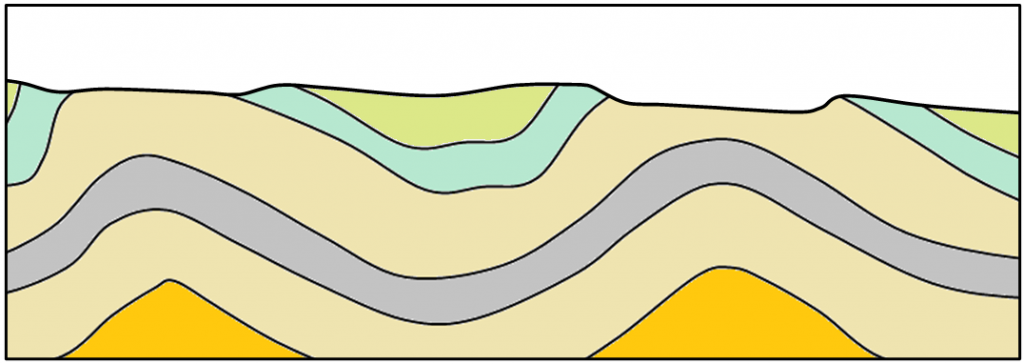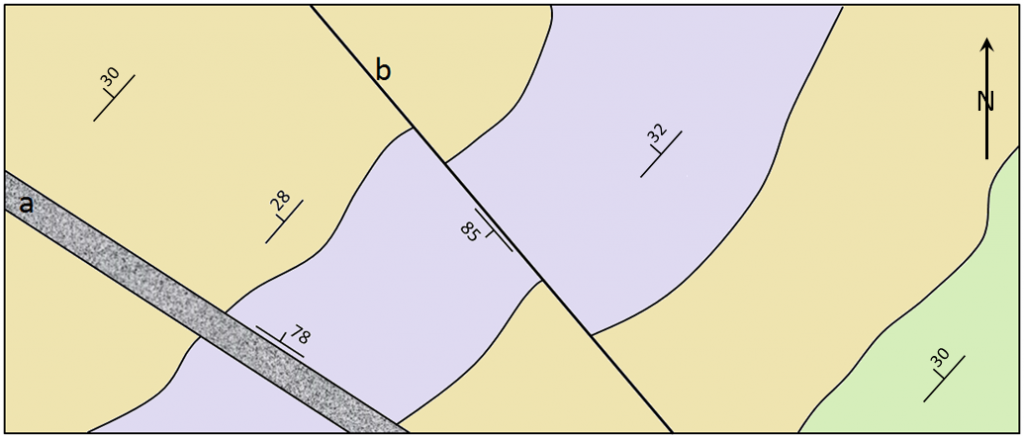94 Summary — Physical Geology – 2nd Edition
- Explain why fractures are common in volcanic rocks.
- What is the difference between a normal fault and a reverse fault, and under what circumstances would you expect these to form?
- What type of fault would you expect to see near to a transform plate boundary?
- This diagram is a plan view (map) of the geology of a region. The coloured areas represent sedimentary beds.
i) Describe in words the general attitude (strike and dip) of these beds.
ii) Which of these beds is the oldest?
iii) What is “a” and what is its attitude?
iv) What is “b” and what is its attitude?
v) Which of these terms applies to “b”: “left lateral” or “right lateral”?
Answers to Review Questions can be found in Appendix 2.
Media Attributions
- Figures A, B: © Steven Earle. CC BY.



